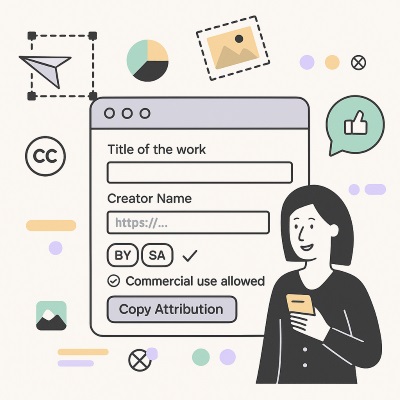TikTok Music Licensing Tool (free)
Audiodrome is a royalty-free music platform designed specifically for content creators who need affordable, high-quality background music for videos, podcasts, social media, and commercial projects. Unlike subscription-only services, Audiodrome offers both free tracks and simple one-time licensing with full commercial rights, including DMCA-safe use on YouTube, Instagram, and TikTok. All music is original, professionally produced, and PRO-free, ensuring zero copyright claims. It’s ideal for YouTubers, freelancers, marketers, and anyone looking for budget-friendly audio that’s safe to monetize.
Stop guessing your TikTok music rights. Answer six quick items and get a source you can defend, with next steps that keep ads live and cross-posts clean. Build once, publish confidently, and avoid mutes, claims, and rebuilds that burn time and budget.
Sourcing legal music for this TikTok
Answer a few items and get a clear recommendation with simple next steps.
Reminder: TikTok designs the Commercial Music Library for content and ads on TikTok. TikTok does not explicitly allow CML tracks outside TikTok. Use royalty free with multi platform rights when you plan to repost.
Your recommendation
Based on your inputs
Embed This Tool on Your Website

TikTok music rules for promotional posts
A post is commercial when it promotes a brand, product, service, app, event, or client. That includes paid partnerships, affiliate pushes, gifted items with posting obligations, whitelisting, Spark Ads, boosted posts, lead generation efforts, and any clip built to drive installs, signups, or sales.

That call decides the music you can legally use. Commercial posts require tracks cleared for advertising, so pick the Commercial Music Library or a royalty-free license with ad rights, because regular TikTok sounds and most mainstream songs only cover personal use and can trigger claims or mutes.

Show the relationship clearly and keep records that prove permission. Use TikTok’s Branded Content tools, add #ad or an explicit caption, save licenses, invoices, and emails from the music supplier, note the track title and ISRC, screenshot the source page, and store everything in a dated folder.

Where TikTok music actually comes from
TikTok’s Commercial Music Library offers pre-cleared tracks for promotional posts and in-app ads. Choose a song and publish with confidence, because TikTok cleared usage for the platform, including Spark Ads and Promote, but it does not grant rights for edits or campaigns outside TikTok.

Royalty-free libraries let you use one license across multiple edits, formats, and placements on TikTok, Reels, Shorts, and YouTube. Download the license file, save the invoice, record the track URL and license terms, and keep them together so you can prove rights when a claim appears.






Direct licensing covers specific chart or catalog songs that you negotiate for a campaign. You need permission from the master owner and the composition owners, with written terms that spell out territory, platforms, usage, length, media spend, and paid social, including Spark Ads and whitelisting.

Cross-posting is only safe when the rights move with your content. Before rolling a clip onto Reels, Shorts, or YouTube, verify that your license or music choice explicitly covers those platforms, offline edits, paid promotion, and reused cuts or captions.
Muted audio 101
TikTok mutes when a promotional post uses music without commercial rights. If you boost a clip, run Spark Ads, whitelist, or tag a brand but pull a trending track from regular sounds, the system treats it as an ad and removes the audio.

Using someone else’s sound on a branded piece also triggers mutes. That includes duet, stitch, or template uploads where the original audio came from a user or a mainstream track, because the permission covers personal use while your post functions as marketing.

Cross-posts create confusion when rights do not travel. A track that works on TikTok may not allow Reels, Shorts, or YouTube edits, and a royalty-free license that fits organic use may exclude paid promotion, so mismatched terms invite automatic removals or claims.

Start by tapping “view details” to see why TikTok muted the audio. Replace the track with a Commercial Music Library song or a royalty-free track that includes ad rights, and file an appeal only when you can upload clear proof like the license file, invoice, and source URL.

You can learn the rules and check each scenario yourself, or answer six questions and let the tool decide. It reads your use case, promotion plan, and cross-post goals, then recommends a compliant music source and a simple paper trail to keep claims away.
Inputs explained
Set each input to match your plan, and the tool will point you to the right music source and the proof to keep for appeals.
Does the video promote a brand, product, or service?
If you promote a brand, product, service, app, event, or client, the post counts as commercial. Affiliate links, gifted items that require a post, whitelisting, Spark Ads, and lead generation all count as promotion, even if you filmed the clip as a casual update.

Commercial use changes the music you can legally pick. Choose the Commercial Music Library or a royalty-free license that includes advertising rights, because regular TikTok sounds support personal use and often fail in ads or paid boosts, which leads to mutes and lost reach.
Will you run ads or Spark Ads?
If you plan to boost the post with Promote or run Spark Ads through a brand account, treat the clip as an ad from the start. Build the edit with music cleared for advertising so you do not rebuild the video later when the media plan goes live.

Ads need clear rights that match paid delivery. Use the Commercial Music Library for in-app ads on TikTok or pick a royalty-free track that lists ad rights by platform, then save the license file, invoice, and source link so you can answer any claim quickly.
Do you plan to repost to Instagram or YouTube?
Cross-posting only works when the license travels with the video. Before you export, check that your music choice covers TikTok, Reels, Shorts, YouTube, and any edits you create in CapCut or other tools that you use for your workflow.

If you plan to reuse the clip across platforms, lean toward royalty-free with ad rights that list each platform by name. The Commercial Music Library fits TikTok, but it does not grant off-platform rights, so plan the source around your rollout instead of fixing problems after the launch.
Do you need a specific chart song?
A famous track needs direct permission. You must secure master rights from the label and sync rights from the publishers, and both sides need to approve your exact use, including the clip length, the media plan, the platforms, and the paid budget.

Direct deals take time and money. Start early, expect back-and-forth on territory and length of term, keep all approvals in writing, and do not post until you hold final documents, since a soft email or a friendly nod does not protect the campaign from takedowns.
Is this client or influencer work?
Client work and paid creator posts count as marketing. Use music that your contract and the platform allow for sponsored content, and keep copies of the insertion order, the license, and the final files so the brand and the media team can ship on schedule.

If an agency will whitelist your post or run Spark Ads through your handle, choose music that already includes ad rights. Keep the track link, the license PDF, and the invoice in the client folder, and save simple captions that disclose the relationship to avoid review delays.
Will you reuse the same music in multiple videos?
If you plan a series, pick a source that supports repeated use. Royalty-free with business terms usually covers multiple edits, cutdowns, and formats across platforms, which keeps your workflow fast and your sound consistent across episodes and remarketing versions.

Reusing music across posts requires clear proof. Save the license file, the invoice, and the track URL, note any limits on impressions or platforms, and tag each upload in your project tracker so editors, clients, and media buyers know the rights and avoid last-minute swaps.
How the logic works
The tool reads your plan like a producer. It checks if the post promotes a brand, if you plan to boost it, if you need a chart song, and if you intend to repost, then maps those answers to the right music source and flags weak spots before export.
The decision tree sends you to one of three sources. It picks the Commercial Music Library when your post lives on TikTok and needs ad eligibility. It recommends royalty-free when you need edits that travel across platforms. It directs you to direct licensing when you ask for a specific chart song.
The risk lens sets a clear status. OK means your source fits promotion and ads. Warning means you use someone else’s sound or plan cross-posting without proper rights. High means you plan ads with non-cleared music or want a chart song without the right approvals from the label and publishers.
The operational output tells you exactly what to do next. It reminds you to turn on Branded Content tools and disclose the relationship. It tells you where to add the sound, either in Creative Center or by importing a licensed file. It lists proof to save for fast appeals and reviews.
Outputs explained
Use the Commercial Music Library when the post promotes a brand or runs as Spark Ads. You get tracks pre-cleared for TikTok content and in-app ads, so organic and paid versions match. Save the track link in your brief, since this choice does not cover off-platform edits.

Use royalty-free with multi-platform rights when you plan TikTok, Reels, Shorts, or YouTube. One license powers multiple edits and paid promotion across platforms. Pick a file that names each platform and ad usage, then save the license, invoice, and URL so you can prove rights fast.

License from rights holders when you need a specific chart song. Secure master rights from the label and sync rights from the publishers, with terms that spell out platforms, territory, length, and media spend. Start early, expect approvals, and keep signed documents on file before you launch.

Prefer royalty-free for flexibility when you will reuse the same track across a series or remarketing cuts. One file can cover multiple edits, formats, and placements, which keeps the brand sound consistent and production fast. Make sure the license includes ad rights and store proof in your project folder.

In-app sounds may be okay when the post is personal and you do not plan ads. If promotion becomes likely, switch early to the Commercial Music Library or a royalty-free track with ad rights. Record which sound you used so you can replace it without rebuilding the edit.

Step-by-step: run a pre-flight
Answer the six items honestly so the tool reflects your real plan. Mark if the post promotes a brand, if you will boost it, if you need a chart song, if you will repost, if it is client work, and if you want to reuse the same track.
Click “Get music source” and read the card from top to bottom. It names the correct source, explains why it fits your plan, highlights any risks tied to ads or cross-posting, and gives simple actions so you can export once and avoid last-minute rebuilds.
Follow the next steps as written and keep proof in one place. Save the license PDF, invoice, track URL, and any ID codes, screenshot the source page, store approvals or emails, switch on Branded Content tools when needed, and use a dated folder so you can answer claims fast.
Plan to post on Reels, Shorts, or YouTube and want paid reach. Prefer a royalty-free track that includes advertising and multi-platform rights, then edit once and reuse confidently. The Commercial Music Library fits TikTok only, so pick a portable license when your rollout crosses platforms.
Sourcing legal music for this TikTok
Answer a few items and get a clear recommendation with simple next steps.
Reminder: TikTok designs the Commercial Music Library for content and ads on TikTok. TikTok does not explicitly allow CML tracks outside TikTok. Use royalty free with multi platform rights when you plan to repost.
Your recommendation
Based on your inputs
Embed This Tool on Your Website

Practical examples
Here is how the choices play out in real projects.
SMB promo, no ads, TikTok-only
A local cafe posts a seasonal drink teaser and tags its brand partner. Pick a Commercial Music Library track so the clip stays eligible for promotion inside TikTok. Add the sound in Creative Center so organic and boosted versions match if you later tap Promote.

Save proof as you go. Drop the track link into the brief, screenshot the sound page, and note the asset ID if shown. Turn on Branded Content tools and write a clear caption that names the partner, since the post promotes a product even without a paid media plan.
Agency deliverable, paid + cross-post
An agency cuts a launch edit for TikTok, Reels, Shorts, and YouTube with a confirmed boost. Choose a royalty-free track that lists ad rights and names every platform. Download the WAV or high-quality MP3 and keep the license text close to the edit files.

Build the paper trail so approvals move fast. Save the license PDF, the invoice, and the track URL in the client folder. Note any limits on impressions or platforms. Keep a simple rights summary in the delivery email so the client, editor, and media buyer work from the same facts.
Creator insists on a hit song
A creator wants a specific chart track for a capsule drop. Start a direct license request and contact the label for master rights and the publishers for composition rights. Share a clear brief that covers clip length, media plan, platforms, territory, and the campaign dates.

Track every approval in writing. Ask for a deal memo that spells out term, territory, platforms, edits, and paid social. Keep signed documents with the project files and hold posting until both sides confirm. If the timeline breaks, present a royalty-free backup so the launch stays on schedule.
FAQs
Ship with rights locked in
Treat music like any other production asset. Pick a source that fits your rollout, save proof, and disclose when you promote. The tool turns rules into a clear plan you can execute. That keeps editors moving, clients aligned, and campaigns live across TikTok, Reels, Shorts, and YouTube.

At Audiodrome, we create interactive tools designed to simplify music licensing and monetization. They help creators, agencies, and businesses avoid common mistakes, save time, and stay compliant while building content that earns fairly across platforms.
Each tool translates complex rules into clear, practical guidance. Our goal is to give you confidence before publishing, ensuring your projects are protected, professional, and ready to succeed in a fast-changing media landscape.














